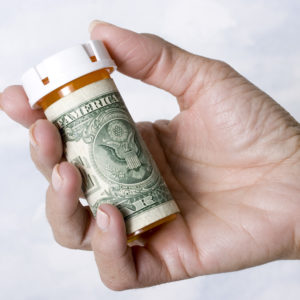Prices for housing, cars and food are rising faster than at any time in four decades. In response to this record inflation, policymakers have considered a range of reforms, including raising interest rates. But one solution hasn’t had a hearing: Why doesn’t Congress mandate price limits on every car, house and gallon of milk sold in the United States?
Because it’s a ridiculous idea, of course. Price controls invariably lead to shortages and a downward economic spiral.
Public officials across the political spectrum generally recognize this fact — except in the case of prescription drugs. For some reason, lawmakers are as determined as ever to impose price controls on medicine. If they succeed, new state-of-the-art treatments will become rare.
The chief problem with price controls is that they distort the forces of supply and demand. Under normal market conditions, buyers and sellers freely interact, generating a constant stream of information about their preferences, ultimately achieving a price that both find acceptable. That price, in turn, influences how much consumers buy, and how much sellers make available.
Now imagine that federal officials decided paper towels cost too much, and capped their price below the market rate.
Consumers would buy more paper towels than normal because they could afford to. But manufacturers would produce fewer rolls because the product would no longer be as profitable. The result would be a shortage: No one would be able to find paper towels to buy.
This type of scenario has played out all over the world. In the 1970s, U.S. gasoline supplies dropped to crisis levels due to price controls on petroleum products. Drivers had to line up for hours to fill their tanks. And some big cities impose price controls on rental housing, which has led to acute shortages and notoriously long wait times. In rent-control-happy Stockholm, the average wait for an apartment is nine years.
Despite the lessons of history, lawmakers in both parties keep advancing legislation that would artificially limit what drug companies can charge for medicine. The newest version of this idea is part of the Democrats’ Build Back Better spending package.
The bill would give Medicare the power to force down prices on popular drugs. But this would distort the market for prescription medicine.
The end result would be a dramatic decrease in production of new medicines. After all, it costs an average of $2.6 billion to invent a new drug and bring it to market. If pharmaceutical firms are guaranteed to lose money, investors would flee the drug sector, and medical innovation would stagnate.
The effect on our future health would be significant. A new analysis from the nonpartisan Congressional Budget Office found that drug price controls could lead to a 10 percent reduction in new drugs entering the market over the next three decades. That translates to 40 fewer medications reaching patients in need.
Some estimates are even larger. University of Chicago economist Tomas Philipson predicted that under a drug pricing proposal similar to the one included in Build Back Better, as many as 342 fewer medicines would be approved by 2039.
Price controls on drugs make even less sense when you consider how stable the cost of medicine has remained over the past year. Whereas gas prices spiked by nearly 50 percent in 2021, and used vehicle prices by more than 37 percent, the price of prescription drugs stayed relatively constant, according to the consumer price index.
To be sure, Americans pay too much at the pharmacy. That’s why, instead of resorting to price controls, lawmakers should go after the companies truly responsible for high drug costs — namely, the drug industry middlemen known as pharmacy benefit managers, or PBMs.
Insurance companies use these opaque entities to wrangle discounts and rebates from drug makers. In 2020, PBMs secured about $187 billion in savings this way. Such massive price reductions could be used to save patients money at the pharmacy counter — but instead, PBMs and insurers keep the vast majority of the funds for themselves. Requiring greater transparency and accountability from these middlemen could lower the price of drugs for patients.
Price controls, on the other hand, would reduce access to new medicines, while slowing drug innovation for years to come.

